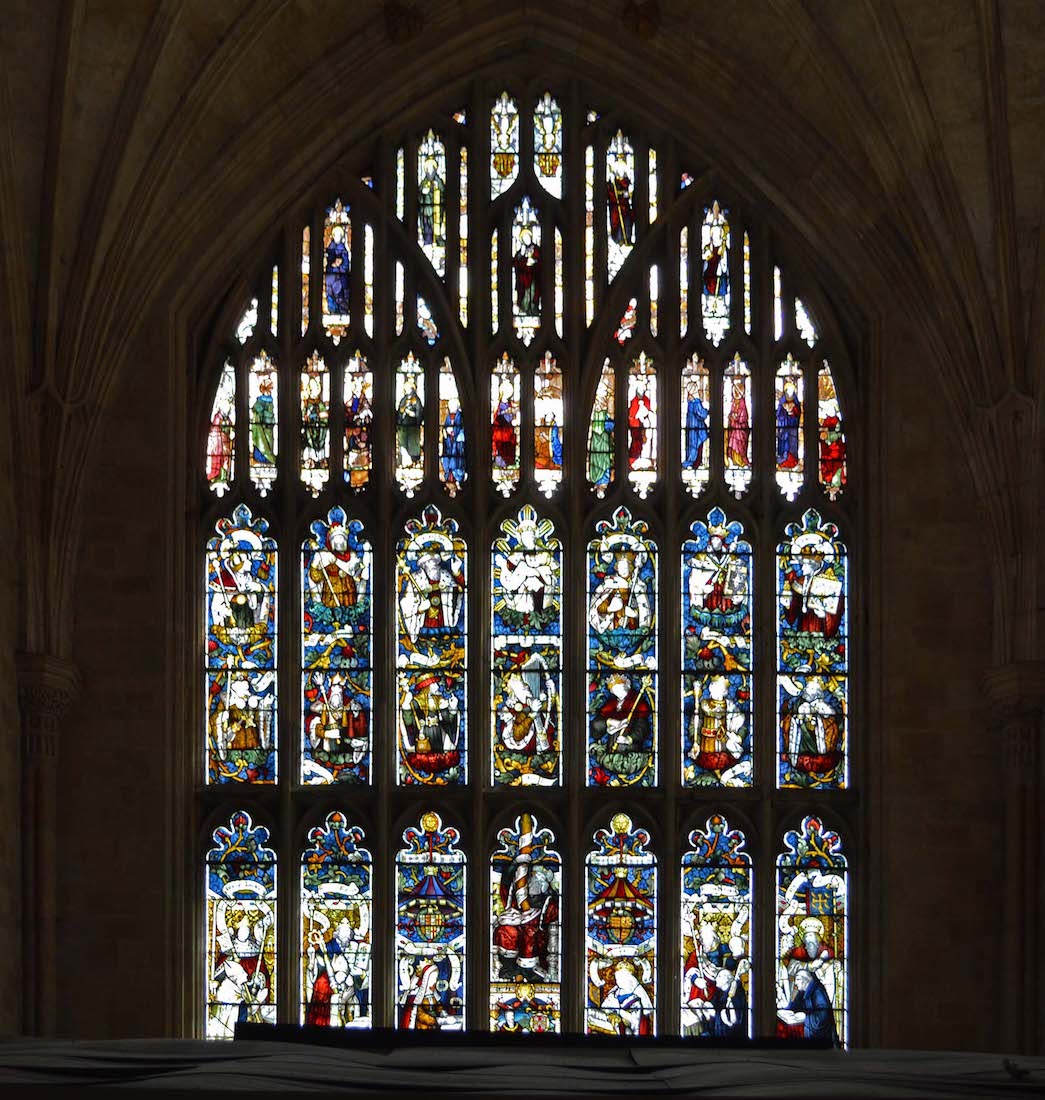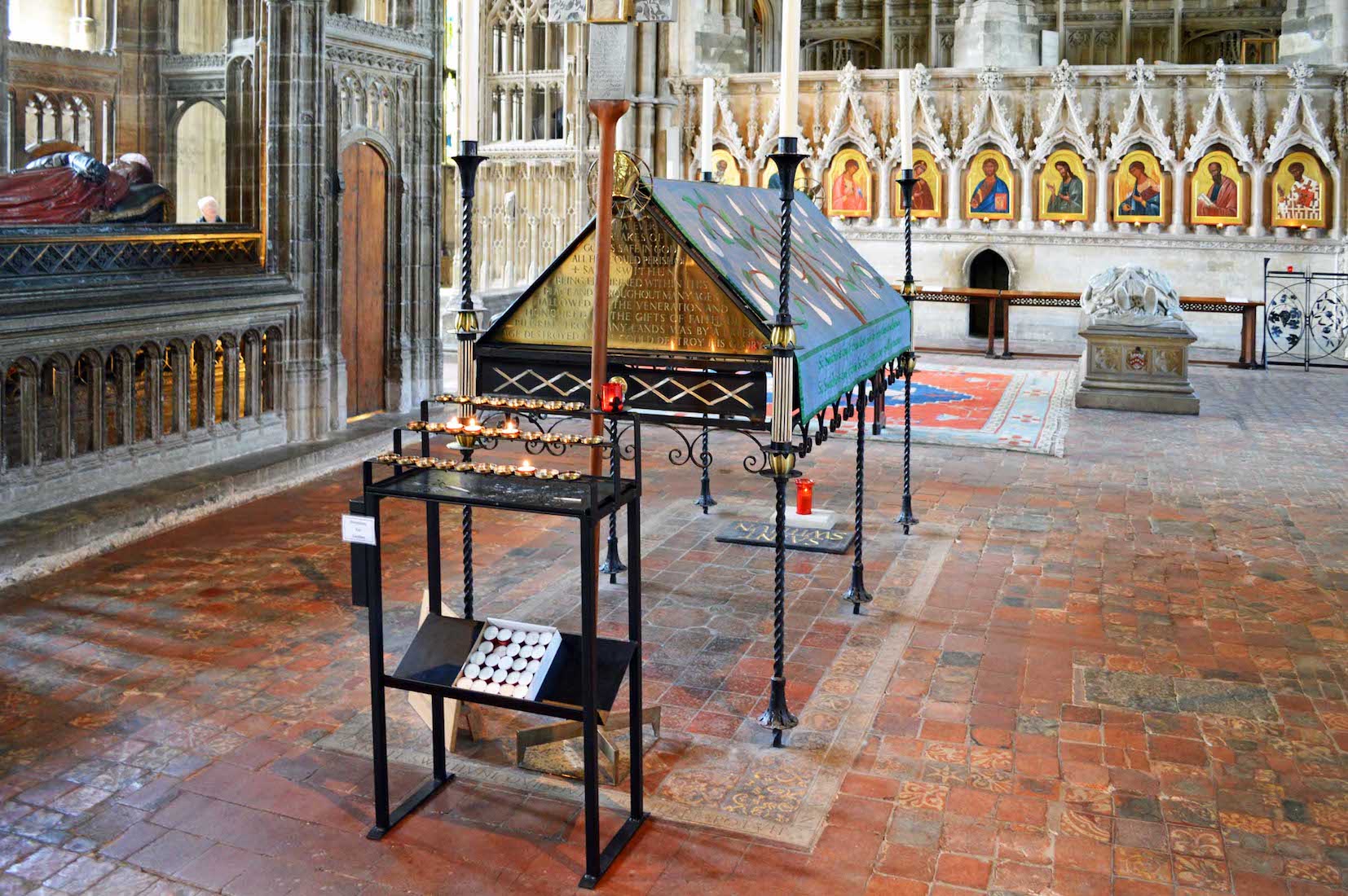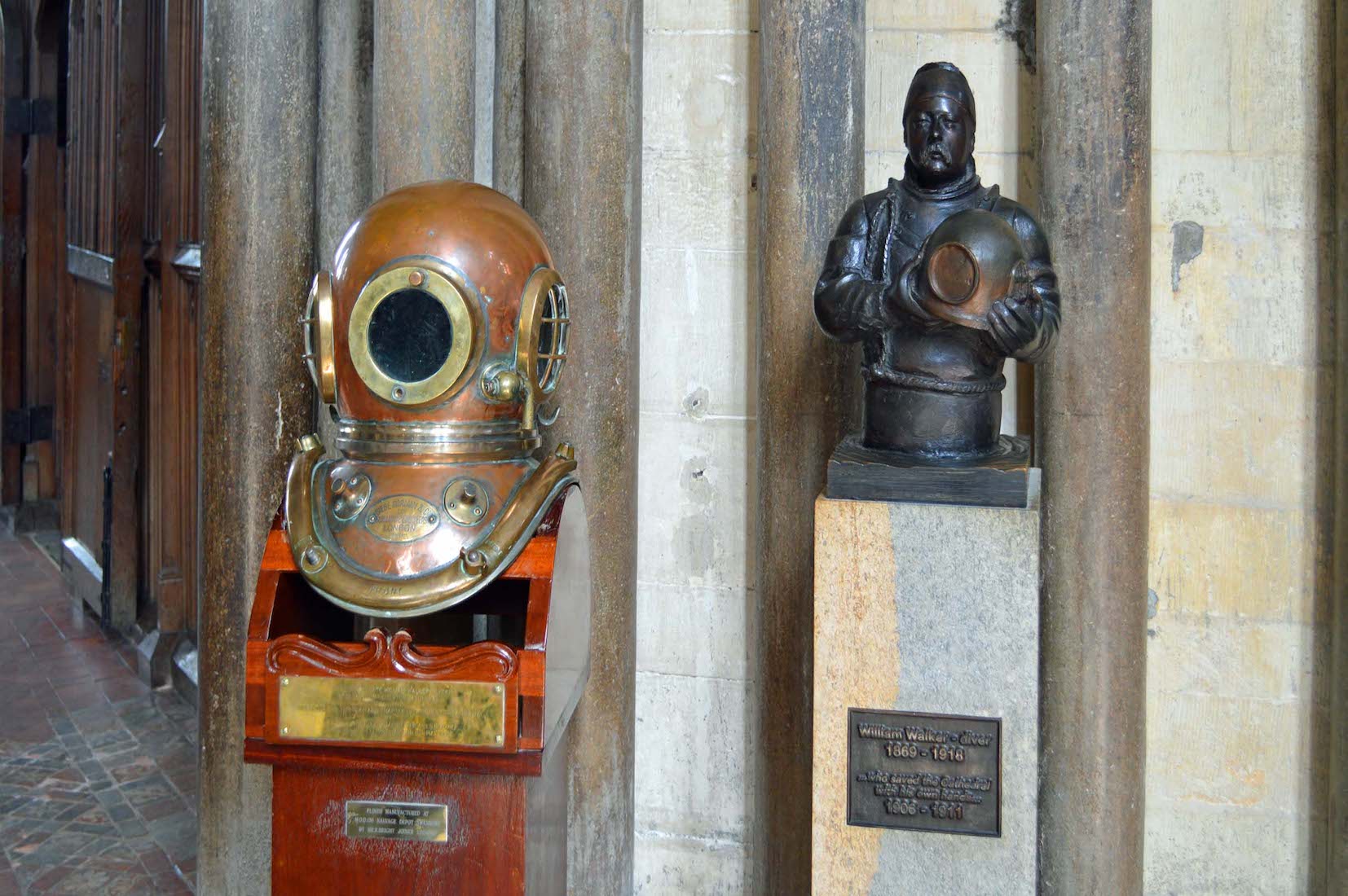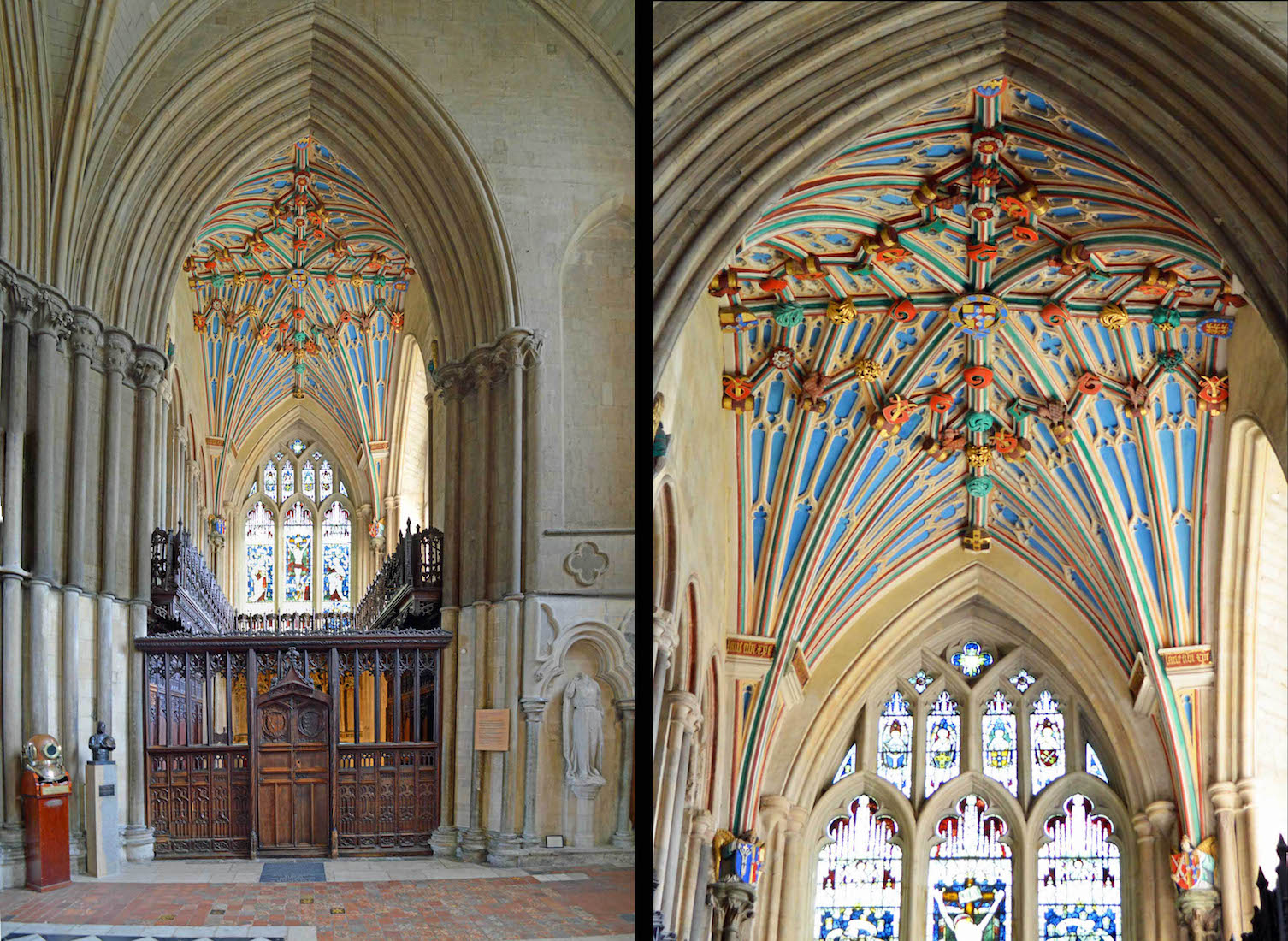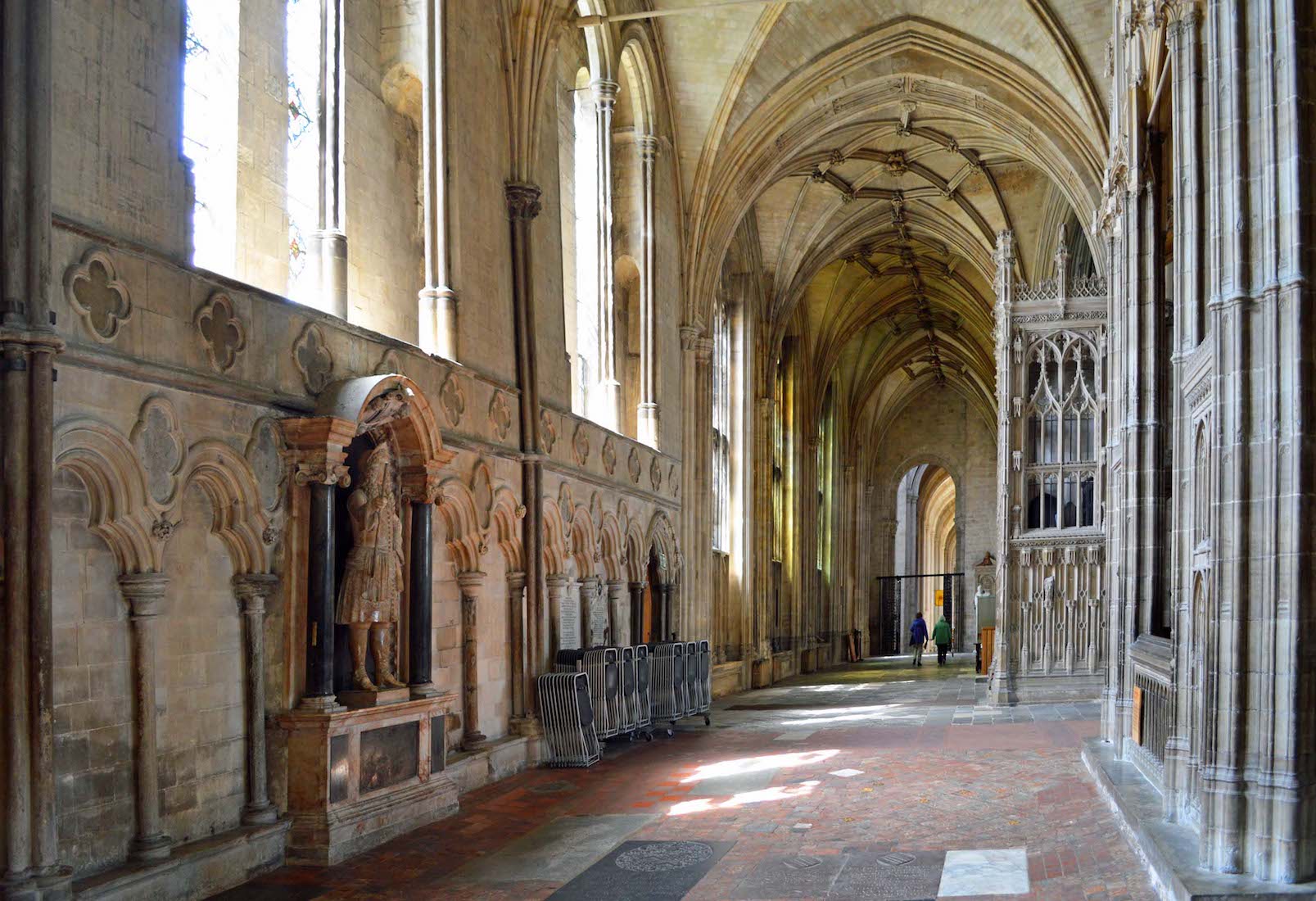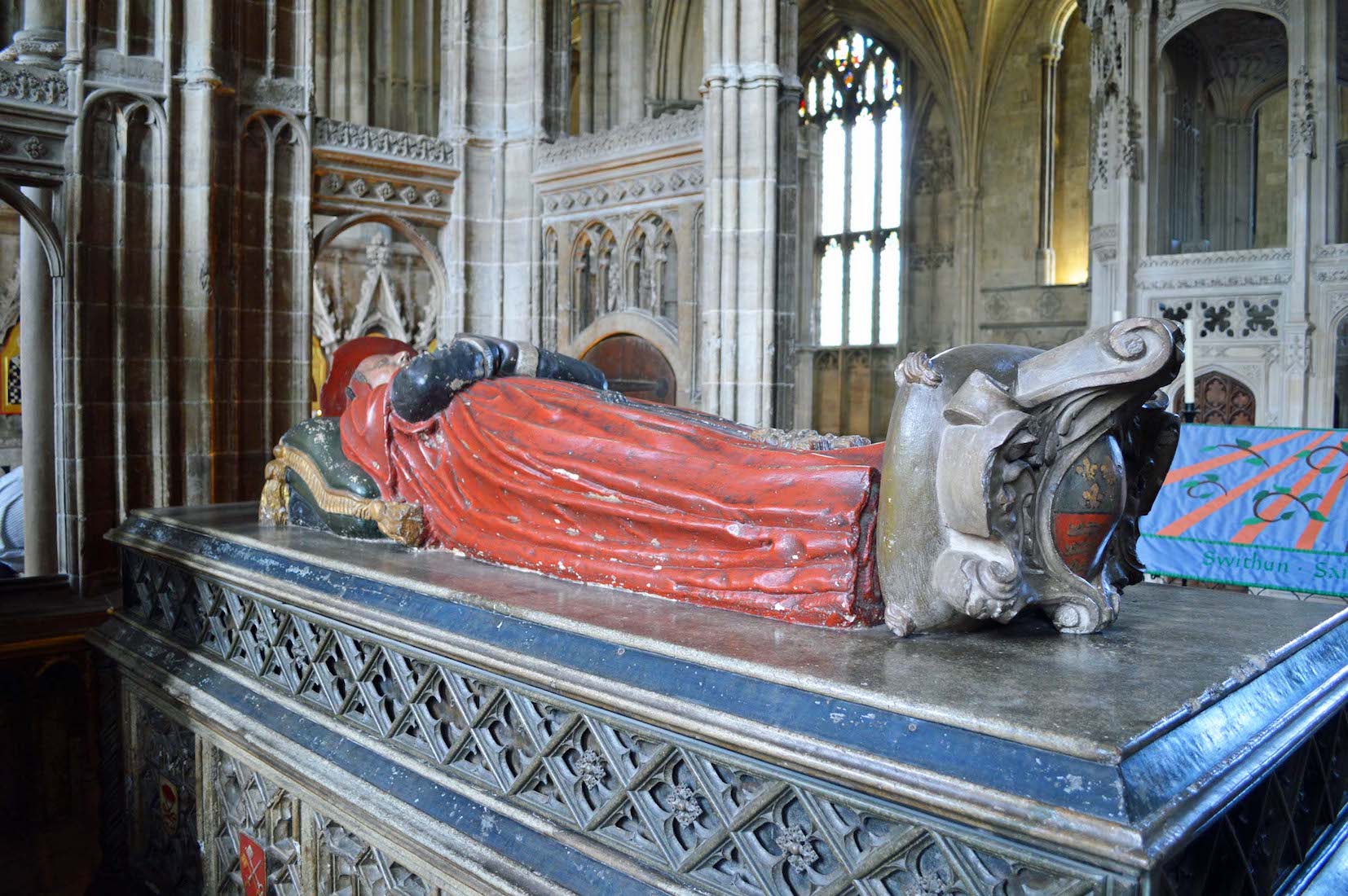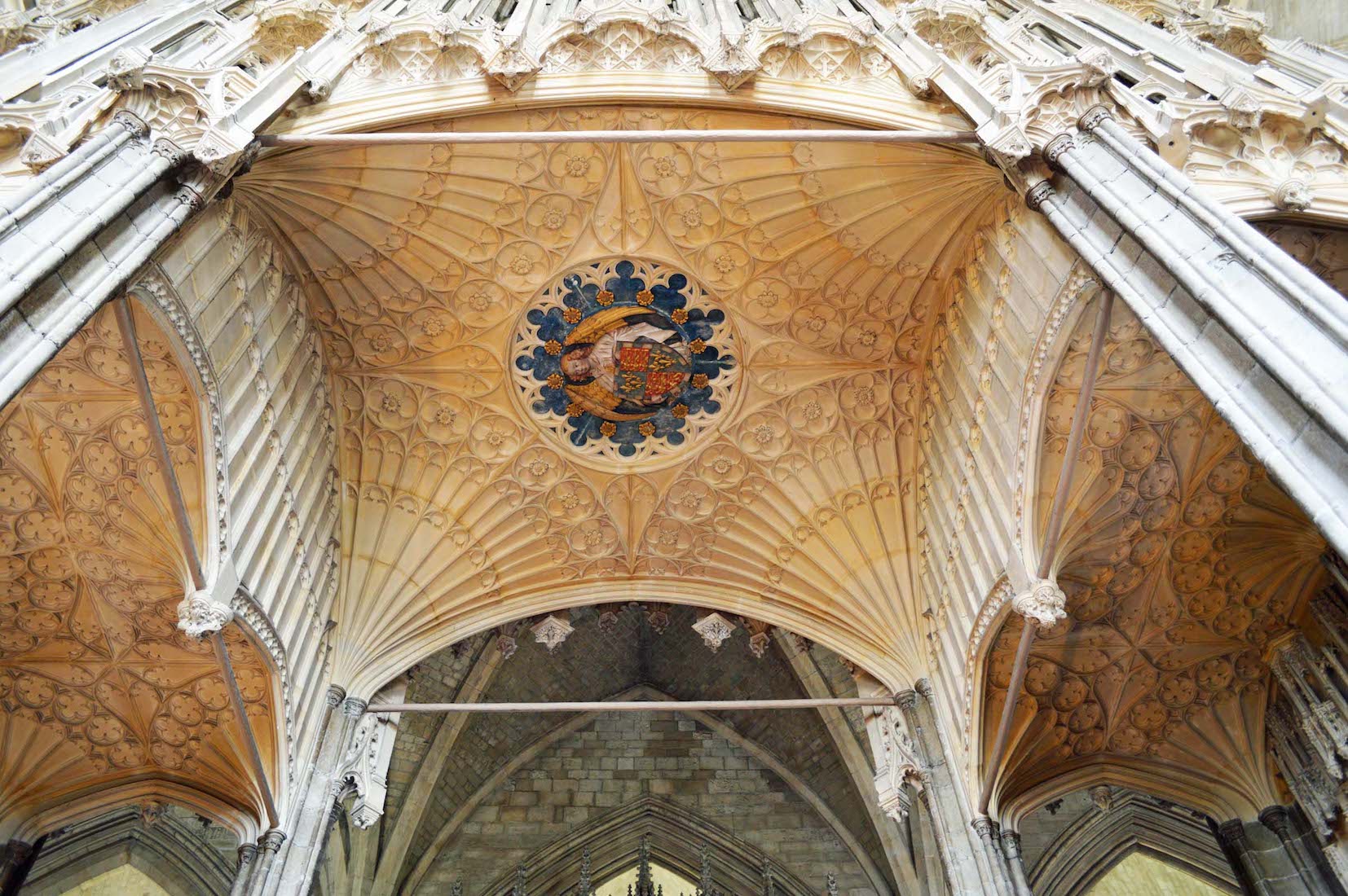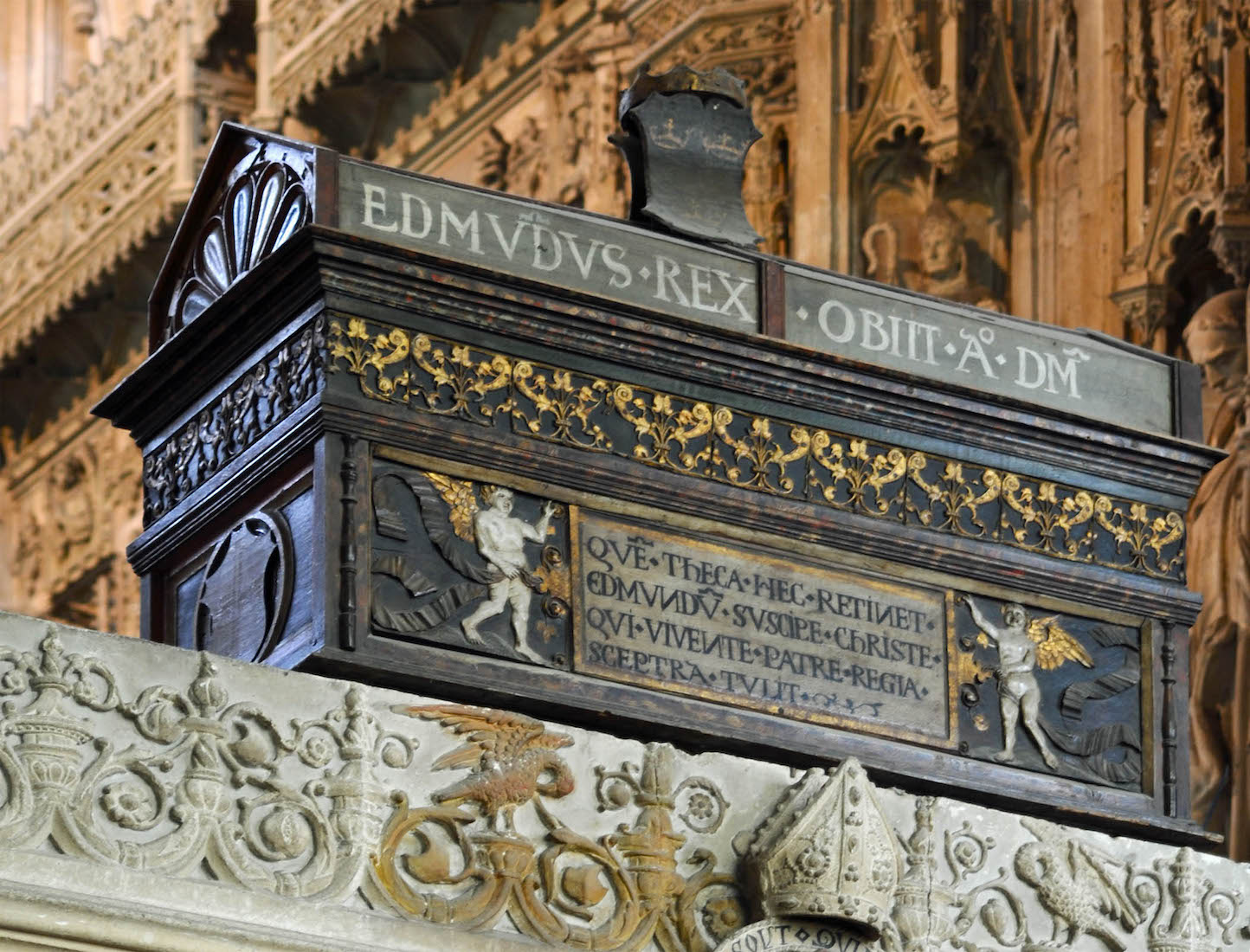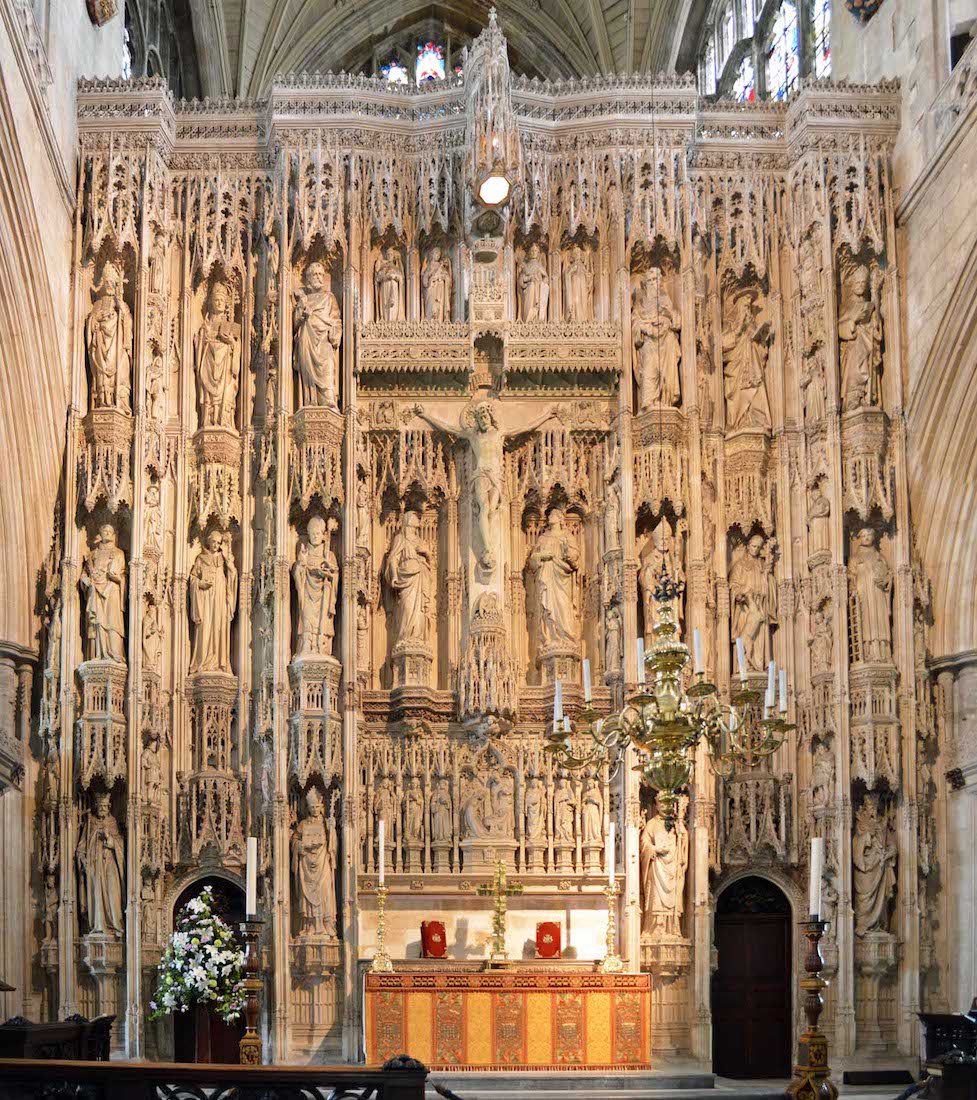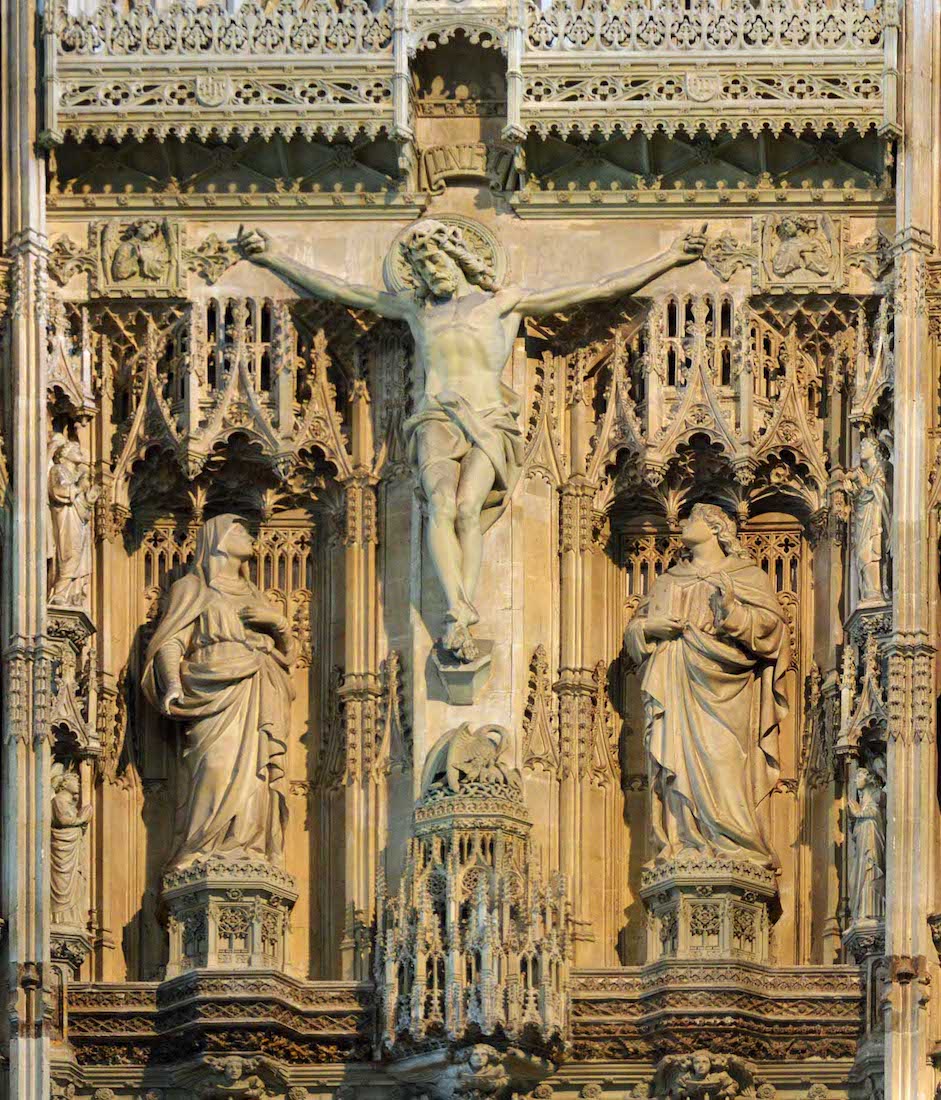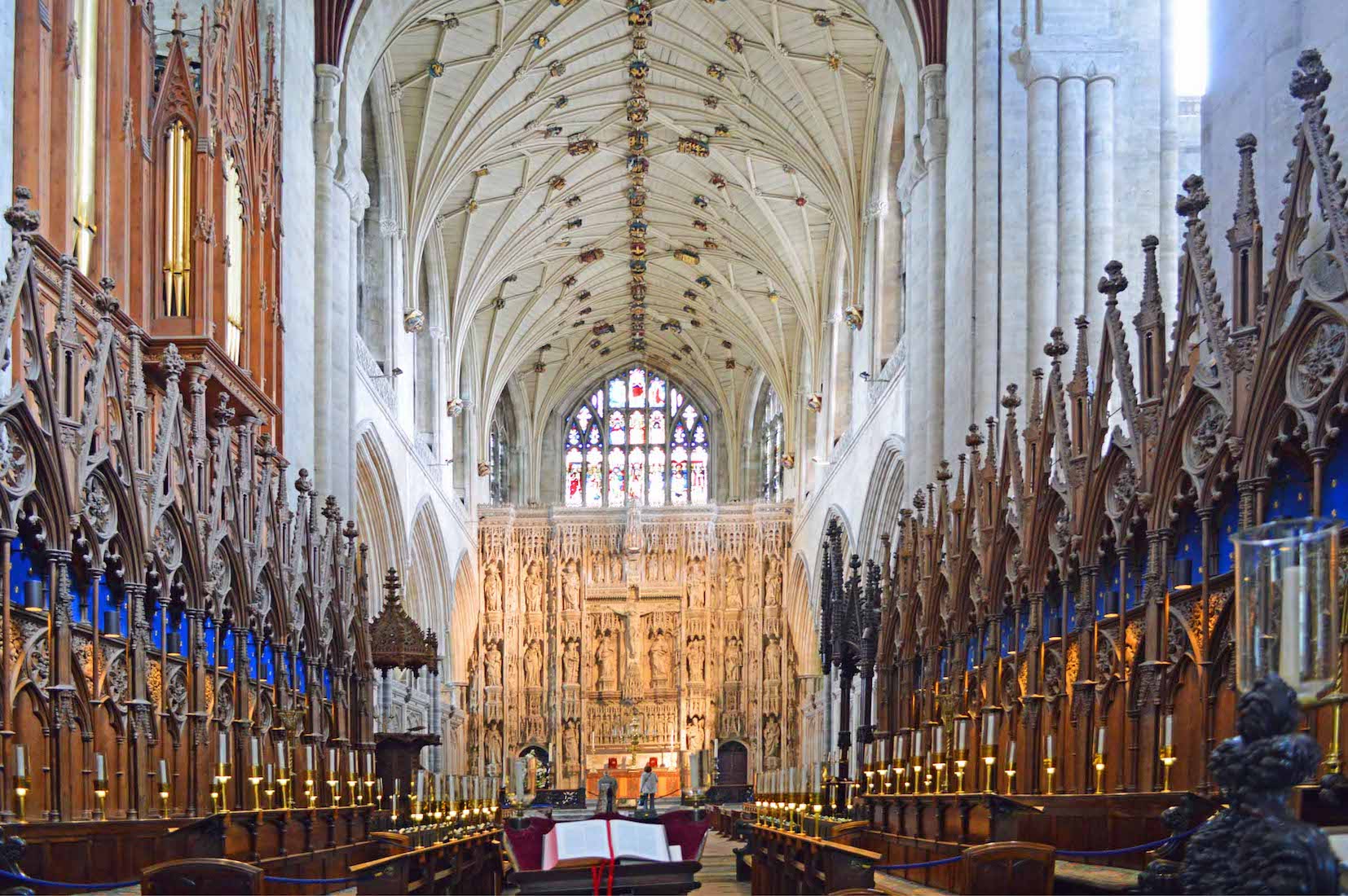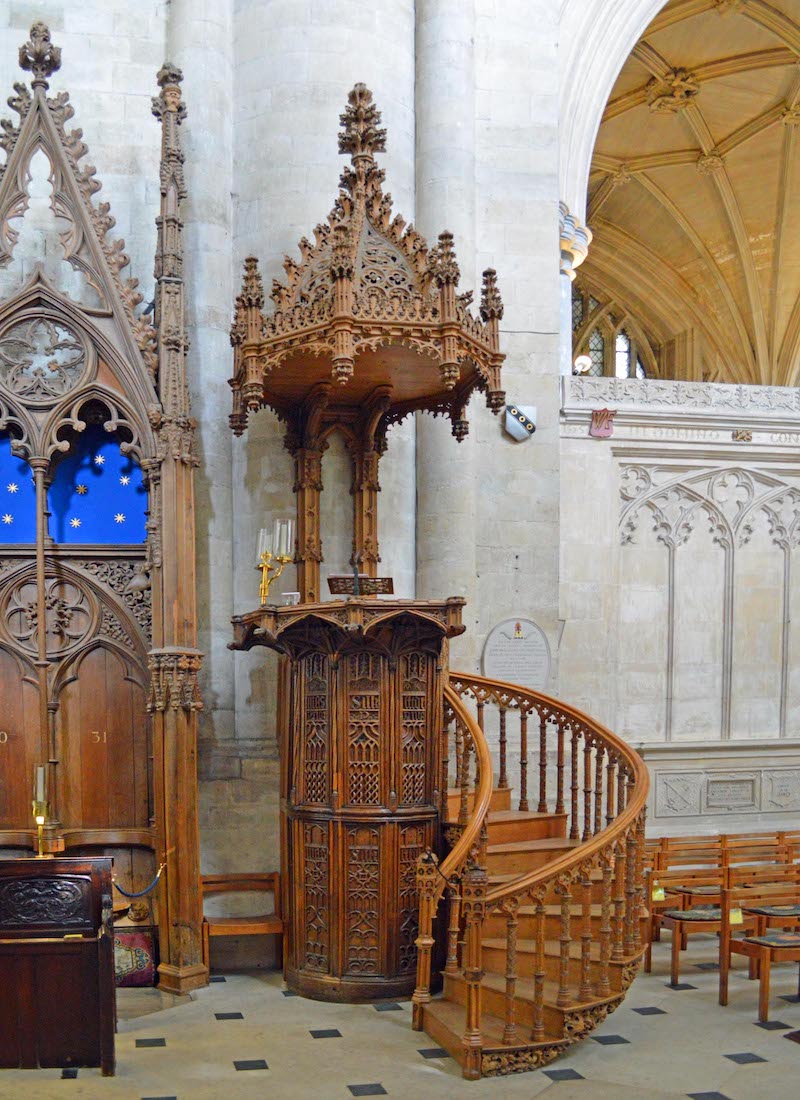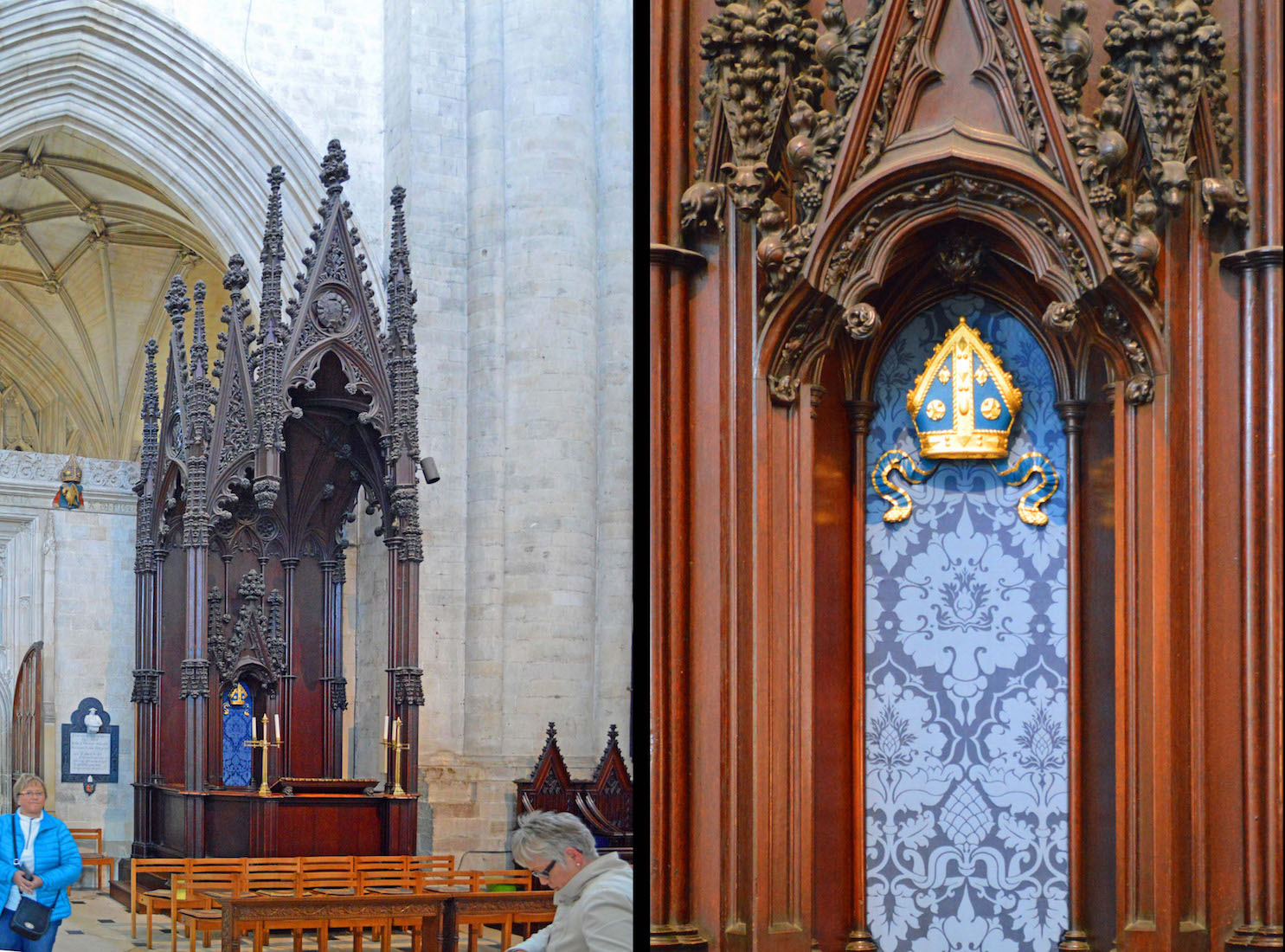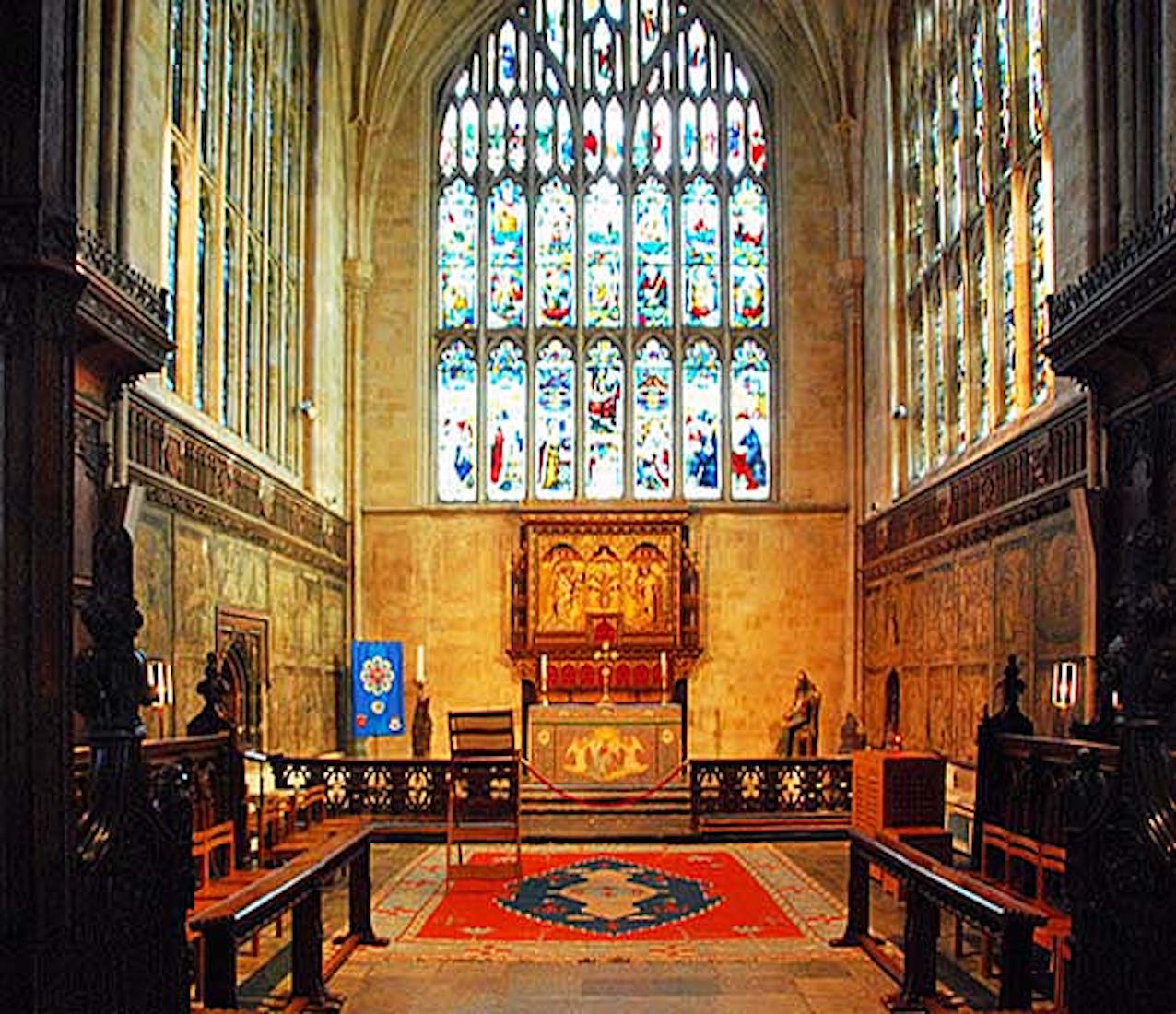
We come now to the Lady Chapel, which is at the far Eastern end of the Cathedral. The fabric of the chapel dates from the 1300’s though it is thought that the interior was re-modeled around 1498 to the present form by Queen Elizabeth, wife of King Henry VII. The Lady Chapel is decorated with a beautiful series of early 16th century wall-paintings depicting Miracles of Our Lady. The golden reredos commemorates the Hampshire novelist, Charlotte Young. PLAN
62. LADY CHAPEL MURALS
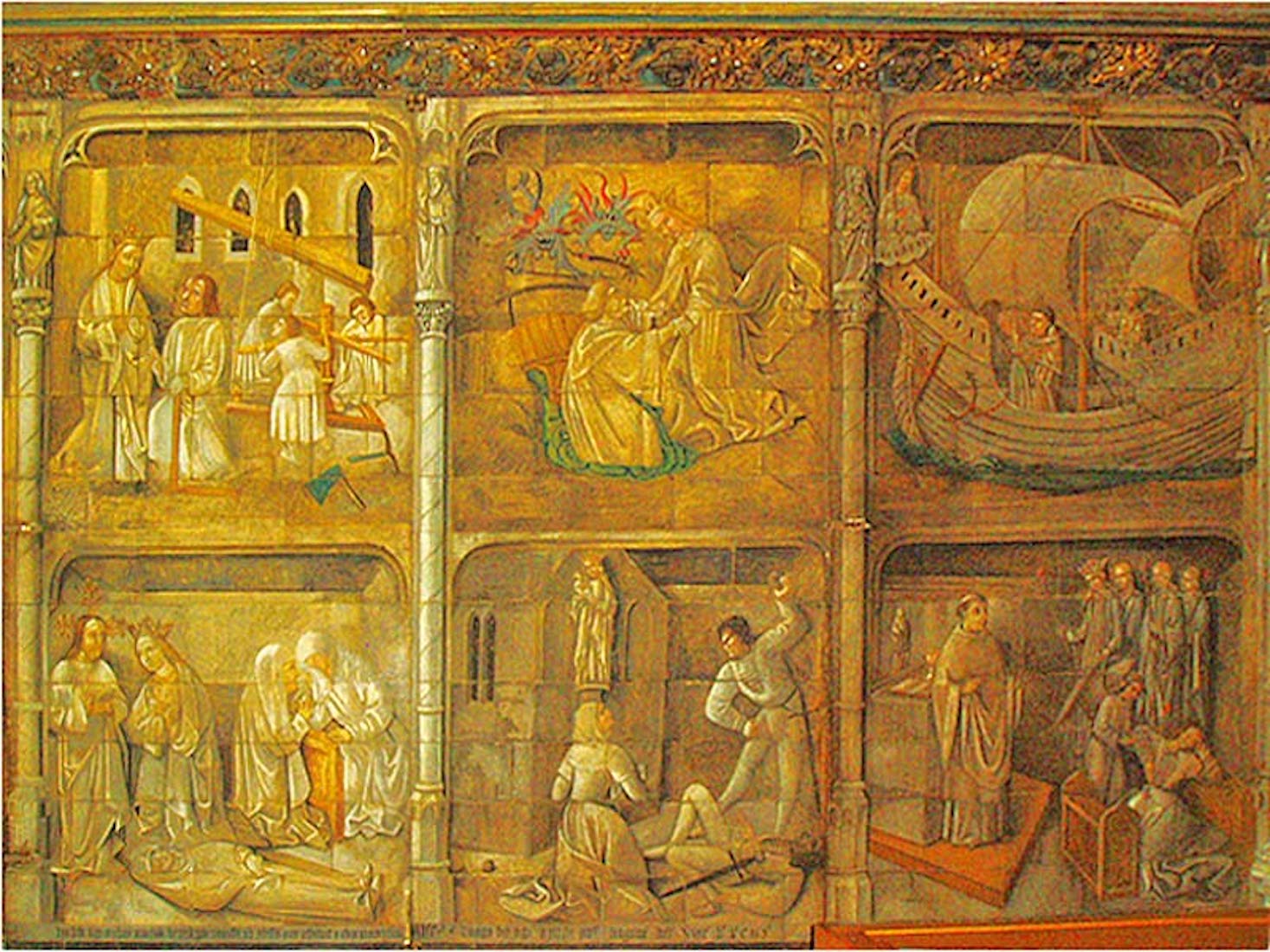
On a side wall of the Lady Chapel we find these wonderful golden murals showing scenes from the life of Christ.
63. GREAT EAST WINDOW
The Lady Chapel is brightly lit by three stained glass windows including the great Eastern window.
64. EASTERN VIEW OF SHRINE
We walk West from the Lady Chapel through a screen doorway to St Swithun’s Shrine. Swithun, who died c. 862, was an Anglo-Saxon bishop of Winchester and subsequently patron saint of Winchester Cathedral. His historical importance as bishop is overshadowed by his reputation for posthumous miracle-working.
65. ST SWITHUN’S SHRINE AND THE HOLY HOLE
This is a view of the shrine from the other end. West of the shrine is a small black hole called the Holy Hole. This originally led to a tunnel back alongside the bones of St Swithun, and was designed so that pilgrims could be close to the Saint’s remains.
66. NINE ICONS
Above the Holy Hole is a set of nine colourful icons depicting the Lord and various saints.
67. DIVER
Just South of the Lady Chapel we find ... this diver? When huge cracks started to appear in the early 1900s, the Cathedral seemed in danger of complete collapse. Early efforts to underpin its waterlogged foundations failed until William Walker, a deep-sea diver, worked under water every day for six years placing bags of concrete. .
68. LANGTON CHAPEL
Just past the diver is the Langton Chapel with its colourful ceiling. Thomas Langton was Bishop of Winchester 1493 – 1500. A powerful prelate, Langton served as King Edward IV’s chaplain. His ornate late medieval chantry chapel boasts elaborate carved panelling and niches. Gothic structures often have fan vaulting, but this Chapel has an extreme version of it!
69. LANGTON CHAPEL TRIPTYCH
The Chapel features a colourful triptych. This has a central Nativity scene, with various lords and nobles looking on from the sides.
70. SOUTH CHOIR AISLE
Leaving the Langton Chantry we look back along the long South choir aisle. In fact, Winchester is one of the largest cathedrals in England, with the longest nave and greatest overall length of any Gothic cathedral in Europe.
71. BEAUFORT EFFIGY
Immediately on the right we come to Bishop Beaufort’s effigy. Henry Beaufort (c. 1377 – 1447) was a medieval English clergyman, Bishop of Winchester, an anomaly in being both a bishop and a member of the royal house of Plantagenet, and Cardinal.
72. CHANTRY CEILING
When the English captured Joan of Arc in 1431, Bishop Beaufort presided at her trial before she was burned at the stake. His chantry has a very attractive ceiling.
73. FOX CHANTRY CHAPEL
A little further along is the Fox Chantry. Richard Foxe (Fox) (c. 1448 – 1528) was an English churchman, successively Bishop of Exeter, Bath and Wells, Durham, and Winchester, Lord Privy Seal, and founde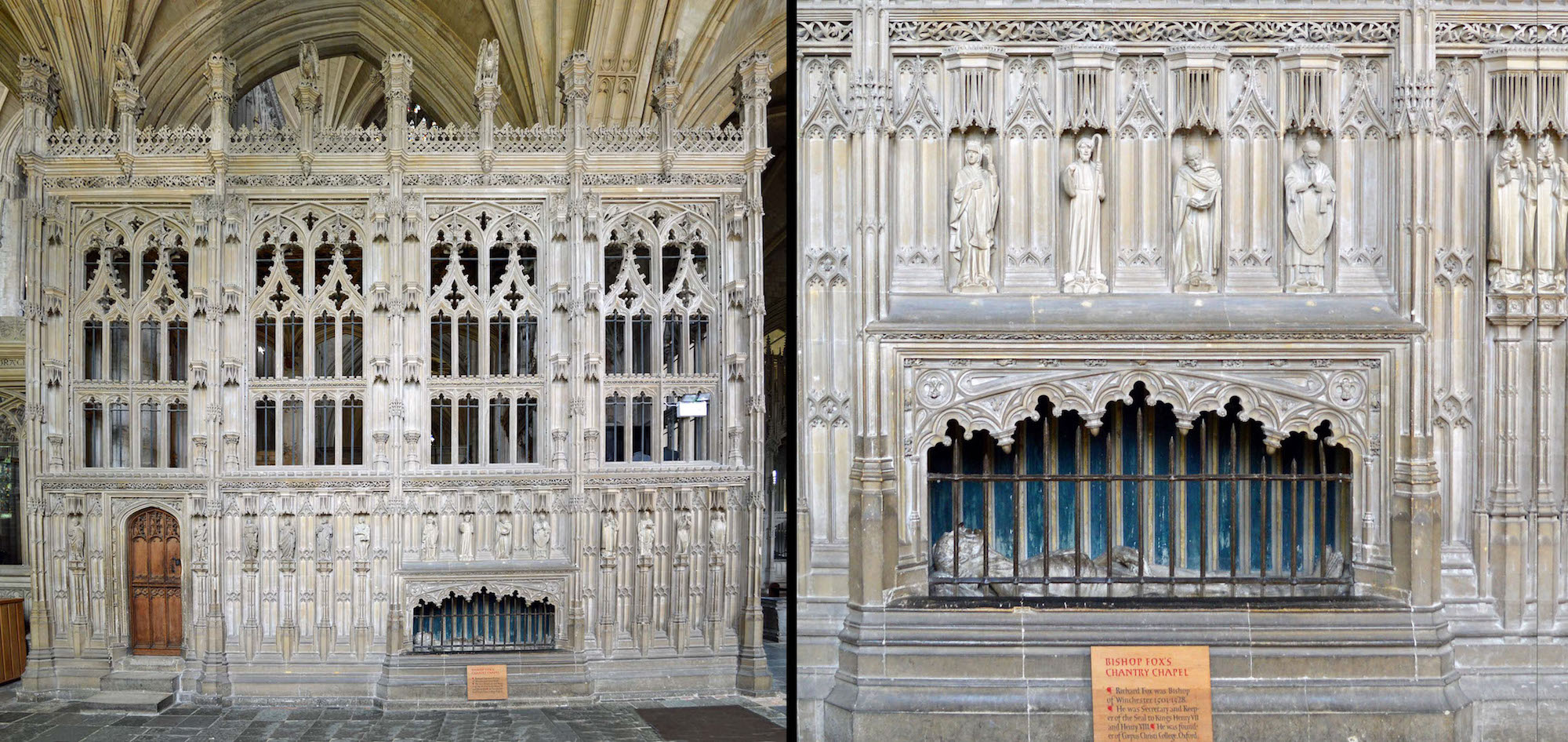 r of Corpus Christi College, Oxford. The sign tells us that Richard Fox was Bishop of Winchester 1501 – 1528. He was Secretary and Keeper of the Seal to Kings Henry VII and Henry VIII. He was founder of Corpus Christi College, Oxford.
r of Corpus Christi College, Oxford. The sign tells us that Richard Fox was Bishop of Winchester 1501 – 1528. He was Secretary and Keeper of the Seal to Kings Henry VII and Henry VIII. He was founder of Corpus Christi College, Oxford.
74. MORTUARY CHESTS
Near here, atop the presbytery screen, are four mortuary chests [Photo Credit: Wikipedia] containing the bones of Saxon kings and their successors, including King Canute, King Egbert, and the early bishops of Winchester. A move of the Chests in the early 1100s and the Civil War in 1642 resulted in a rather disorderly random redistribution of the bones in the present day.
76. REREDOS DETAILS
For me, this was the highlight of my visit to Winchester Cathedral. The sheer size of the screen and the intricacy of the carving are breathtaking. Right around the outside of the reredos are rows and columns of various saints, bishops and kings.
77. REREDOS CRUCIFIXION
The central focus of the reredos is this Crucifixion scene with Christ on the Cross, and his mother, Mary, and St John keeping watch.
79. CHOIR PULPIT
On the left here we can see the choir pulpit, used for smaller Evensong services.
80. CATHEDRA
Opposite this is the Bishop’s throne or cathedra – from where our word ‘cathedral’ derives. A church is a cathedral, not because it is big and grand (although that may be the case), but because the cathedra is present. The cathedra is ornate and beautifully carved, and almost certainly uncomfortable!


